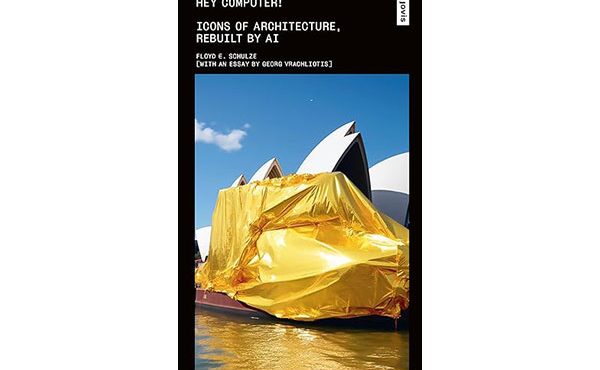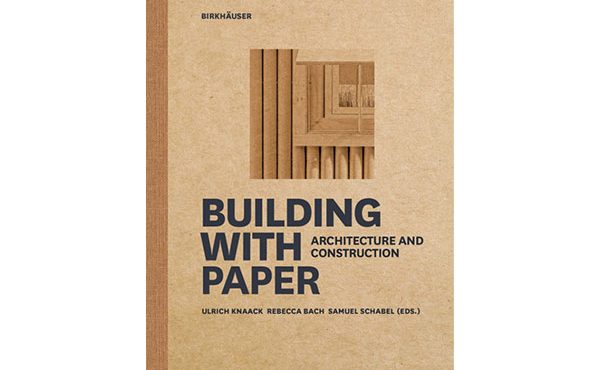“SANAA’s work does not introduce order as do those mid-century architectures to which it is routinely compared; rather it imposes a fine disorder and instability, at times even an agitation, into the surround. The work of SANAA seeks to operate with the invisible potency of weather.”
– From Sanford Kwinter’s essay ‘Koan’
Edited by Florian Idenburg (Lars Müller Publishers, 2010)
With the recent announcement of SANAA as the recipients of the 2010 Pritzker Prize, Lars Müller Publishers, having previously released two other publications on this pair of Japanese architects and their work has hit the nail on the head by delivering this timely snapshot of three Princeton design studios taught by Kazuyo Sejima and Ryue Nishizawa, otherwise known as SANAA, between 2006 and 2008. Wrapped in a no-nonsense utilitarian cover befitting an architecture treatise of this nature, this brief though dense publication is an amalgam of student’s projects from these design studios, interspersed with essays written about SANAA, including one by Stan Allen, current Dean of the Princeton school of architecture, and the always poignant architectural commentator Sanford Kwinter. Rounding out the text, Dutch photographer Iwan Baan provides the visual narrative for the book, punctuating the descriptions of the student projects and theoretical discourse with stark and realistic images of Japan and its urban scenography.
Though the office is comprised of a pair of architects, it is undoubtedly Kazuyo who takes the role of mentor, having formed her own practice in 1987 after working with Toyo Ito, and going on to receive Japan’s ‘Young Architect of the Year’ Award in 1992. In 1994 she formed SANAA with her former employee Ryue, and began the collaboration as a multi-disciplinary office practicing on the world stage, receiving residential, institutional, and commercial commissions in New York, Lausanne, Valencia, and Tokyo. While without a doubt the Pritzker is the crowning achievement for the office’s work, they are no strangers to accolades, having received the ‘Golden Lion’ at the 2004 Venice Biennale. Kazuyo is also currently the Director of the Architecture Sector for the Venice Biennale, and is set to curate the 12th International Architecture Exhibition later this year.
With the opening of the firm’s 2006 New Museum of Contemporary Art in New York, SANAA found themselves catapulted overnight to the status of starchitects, much to the bewilderment of some, and later reconfirmed by the commission to do the much coveted Serpentine Galley pavillion in London’s Hyde Park in 2009. As the Princeton-run, Tokyo-based studios featured in the book slightly pre-date Sejima and Nishizawa’s most current accolades, they thereby offer a glimpse into the office’s earlier genesis. As explored and debated in the essays throughout the book, theirs is an architecture most often misunderstood, as more traditional, Western architects, perhaps having naively believed they had encountered everything Japanese minimalism had to offer, from Ando to Taniguchi, are now baffled anew by SANAA’s style, or absence thereof. SANAA presents a whole new generation of architecture coming out of the land of the rising sun, along with the novelty and innovation that accompanies anything that runs contrary to modern architecture’s ‘business-as-usual’ model.
As Kwinter describes them, theirs is a work of actualization realized through absence, comparing them in his essay ‘Koan‘ – a tenet of Zen Buddhism – as purveyors of ‘the quiet in the land’, later betraying his Canadian origins by quoting Glenn Gould and his famous investigations of the Canadian North. More than a physical notion of space, both Gould and SANAA share a kinship for having sought out that emotional and mysterious place in which the human psyche resides. Similar to the silence of John Cage’s 4’33”, this notion is architecture as invisible artform, or as Viktor Shklovsky wrote nearly a century ago, it is the role of art to rouse the human experience from its ontological slumber – so too does the work of SANAA set out to rouse the world of architecture.
Among the book’s essays, it is one written by one of the studio’s students that I believe provides the book’s most timely polemic. Michael Wang, whose studio project focused on a community of hikikomori, reveals an alarming phenomenon of shut-ins occurring in Japan’s urban centres, comprised of hundreds of thousands of Japanese youth. Besides the sociololgical ramifications, Wang imagines a housing project for a population of hikikomori much as we presently have housing for senior citizens. His essay, simply entitled ‘Shut In’ presents a critical addition to the interviews and essays in the book, and illuminates a societal dysfunction which will shortly impact itself upon Japan’s urban fabric as the population’s aging baby-boomers retire. That this will undoubtedly manifest itself architecturally is truly visionary on the part of Wang, and therein provides one demonstration of the value of having the studios in Japan.
But it is the title of the book which presents the greatest value of the studios and the lesson the West can learn from Japanese post-war urbanism – the notion that densification, and consequently a smaller carbon footprint, is achievable just as much by densely situating single-storey dwellings as it is by building residential tower after residential tower. The criticism of the suburbs in the West is arguably not so much a criticism of the single-family dwelling as it is of the yard around the same house, often mandated for zoning purposes such as right-of-ways and fire protection. But local zoning changes in history have not always been consistent with effective land-use, and great sprawling yards are often the norm in North American inner-city suburbs. While an architecture student at UBC, one studio I took looked at the ratio of lot sizes to house footprints around Brentwood Mall in Burnaby, and found 1:10 and 1:12 to be the norm.
Looking at the stunning photography of Tokyo taken by Iwan Baan, one is immediately struck by the overall absence of lawns and park space. Laneways and spaces between houses in effect become the parks and spaces of social interaction, while those parks that do occur are carefully designed urban artifacts. One photo by Baan of a Tokyo cemetery is startling in the fact that the gravestones are so close to each other that they look like they’re one atop the other. While to us in the West this may certainly seem like throwing the baby out with the bathwater, it teaches us that living in close proximity to each other without certain amenities like tennis courts and lawn bowling greens need not necessarily mean the end of the world. All of this would have obviously been very much in mind as Stan Allen asked Sejima and Nishizawa to head up the three full-year studios that form the basis of the book.
As a preface to the book, Stan Allen explains that SANAA were the recipients in 2005 of the school’s Labatut Professorship, a three year appointment that Princeton gives to international architects to come teach at Princeton. As the direct result of this, SANAA initiated the Princeton Tokyo Studio program which the book gives significant insight into, and as fully intended by the nature of the Labatut Professorship, the design studios inevitably become a laboratory in which to exchange both Eastern and Western design methodologies, derived from their own unique contexts.
As set out by Stan Allen, SANAA, and other Princeton faculty, the studio’s program objectives varied from year to year, with three sites in three different Japanese cities – Tokyo, Onishi, and Kanazawa – progressing from problems of urban housing in the first year, to town planning in the second, and finally to realizing a communal art gallery space in the third year studio. The common thread in each case could best be summed up by the title of Allen’s essay in the book – ‘Dirty Realism’. As a phrase first coined in literay circles in 1983, it was later adapted by film critics and poets, until Frederic Jameson brought it to architecture to describe the state of the modern post-war city in his writing in the early 1990s. As Allen writes it, Jameson “describes a new social space, a ‘post-civil society’ that is manifest in the interconnected ex-urban spaces of the United States, the depopulated industrial sectors of Europe, or the rapidly expanding cities of Asia.”
In the end, the book stands as much as a monograph of the SANAA project and its design philosophy as a depiction of these three Tokyo-based design studios. Whether its Allen’s description of their work in the context of ‘dirty realism’, or Kwinter’s notion of the ‘contraction’, these two contributors among others in the book do their best to uncover the work of SANAA which has taken the architectural world by storm, and at once giving their work the praise it deserves, while debunking the critics who have called their work overly simplistic and reductivist. While Japanese nihilism as personified by the hikikomori may not be everyone’s cup of tea, Sejima and Nishizawa arrive at a time when architectural posturing has no choice but to give way to action, where vanity and ego have nothing whatsoever to contribute to the gritty realities of homelessness, slums, and urban isolationism. SANAA then comes as a breath of fresh air in the breathless absence of our architectural ethos.
***
Editor’s note: This review was originally published in 2010.
Sean Ruthen is an architect living, working, and writing in Vancouver.




